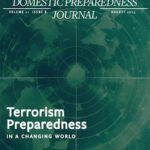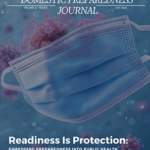Artificial intelligence (AI) and machine learning (ML) are transformative technologies that have revolutionized various industries, including emergency management, humanitarian relief, and disaster response. AI refers to developing computer systems to perform tasks that typically require human intelligence, such as learning, reasoning, problem-solving, and decision-making. On the other hand, ML is “a subset of AI that enables systems to learn and improve from experience without being explicitly programmed” automatically.
AI and ML can enhance preparedness, response efficiency, and decision-making in all-hazard emergency management, humanitarian relief, and disaster response by analyzing vast amounts of real-time data, predicting potential risks, automating tasks, and supporting coordination among response agencies. This comprehensive approach leads to more effective disaster management, reduced human error, and increased adaptability.
Examples of AI and ML Applications
Like the Rush song “Distant Early Warning,” AI and ML play a crucial role in early warning systems predicting natural disasters, such as hurricanes, earthquakes, and floods. By analyzing historical data, weather patterns, and sensor data, these systems can provide timely alerts to communities and authorities, allowing them to take preventive measures and evacuate if necessary. For instance, the European Centre for Medium-Range Weather Forecasts (ECMWF) utilizes AI techniques to improve weather predictions and storm tracking.
After a disaster strikes, assessing the extent of damage is critical. AI-powered tools, like remote sensing and satellite imagery analysis, can quickly assess the affected areas, identify damaged infrastructure, and prioritize response efforts. The Humanitarian OpenStreetMap Team (HOT) uses AI to analyze satellite imagery to map and assess disaster-affected regions.
Efficiently allocating resources, which may be scarce, is vital during relief operations. AI algorithms can optimize supply chain management, route planning, and resource allocation based on real-time data and demand patterns. This optimization helps to ensure that resources reach affected areas promptly. The United Nations World Food Programme (WFP) employs AI to optimize the delivery routes of food aid.
AI-driven sentiment analysis of social media posts and news articles can provide insights into affected communities’ emotional states and needs. This information aids in tailoring response efforts and identifying urgent requirements. To understand the affected population’s needs, UNICEF uses AI to analyze social media data during crises.
AI-powered chatbots provide real-time information and assistance to affected individuals, relieving the burden on call centers and response personnel. These chatbots can answer queries, offer safety tips, and guide users to appropriate resources. The Red Cross uses AI chatbots to provide support and information during emergencies.
AI and ML can perform predictive analysis of healthcare data, travel patterns, and other relevant information in public health emergencies to predict disease outbreaks and spread. This information enables health agencies to implement timely containment measures. The HealthMap project, developed at Boston Children’s Hospital, uses AI to monitor and forecast disease outbreaks.
Incorporating Technologies in Emergency Response Systems
AI and ML have emerged as powerful tools in all-hazards emergency management, humanitarian relief, and disaster response. Their ability to analyze vast amounts of data, predict potential risks, automate tasks, and support decision-making has revolutionized disaster management strategies worldwide. By incorporating these technologies into emergency response systems, authorities can mitigate risks, optimize resource allocation, and provide timely assistance to affected communities, saving lives and minimizing what can be catastrophic impacts from disasters.
Links to other articles in this series:
Part 1 – Information and Communication
Part 3 – Artificial Intelligence and Machine Learning
Part 4 – Robotics and Automation
Part 5 – Legal and Privacy Concerns


Ian Pleet
Ian Pleet is committed and dedicated to serving as an outstanding example of an emergency management professional with over thirty years of hands-on expertise. He is widely recognized as an adept manager of high-risk emergencies, with a strong focus on addressing chemical, biological, radiological, nuclear, and explosive threats (CBRNE), as well as weapons of mass destruction (WMD) and infectious diseases. His record of accomplishment is marked by the successful design and execution of exercises, delivering adult education using high-fidelity simulations, and establishing effective incident management systems during emergency responses. Moreover, Mr. Pleet is renowned for his ability to advocate policy and oversee program reviews, and he is considered an authority in risk management. He plays an active role in emergency management as an instructor for emergency management and incident command courses, contributing to industry publications and providing technical oversight for textbooks before publication. He is a pro-board-certified fire officer IV, FEMA Professional Continuity Practitioner, and DoD Antiterrorism Officer.
- Ian Pleethttps://domesticpreparedness.com/author/ian-pleet
- Ian Pleethttps://domesticpreparedness.com/author/ian-pleet
- Ian Pleethttps://domesticpreparedness.com/author/ian-pleet
- Ian Pleethttps://domesticpreparedness.com/author/ian-pleet





